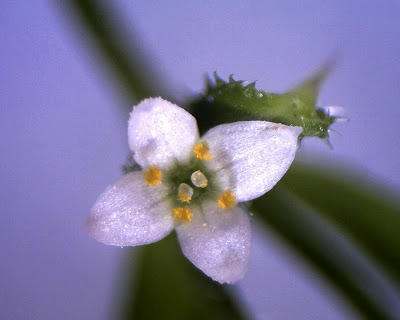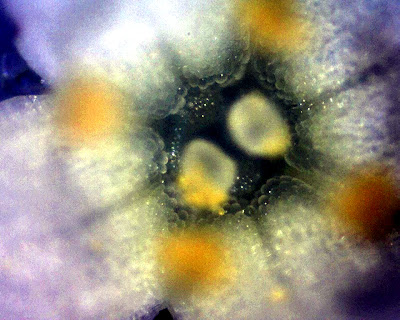A couple more pictures from my 'new toy', the USB microscope. This time of a familiar flower. The plant called Cleavers (Galium aparine) is well known to us all, but often under many different names. As children, we knew it as 'Sticky Willy' but it is also known as Goosegrass, Stickyweed, Stickyleaf, Catchweed, Robin-run-the-hedge and many more. Who hasn't picked a piece of it and thrown it at someone and seen it 'stick' to their clothing as it's thousands of minute hooks snagged into the fibres?
The flowers of this plant are very small, white and probably not usually seen, but they are nevertheless rather lovely when seen at 60 times magnification.
Looking closer and you can see why small insects like this flower so much. Located at the base of the petals, right inside the flower (an area known as the perianth), are the necatries. These are the 'glands' which produce the sugary nectar which many insects crave and which offers them a reward for their pollination of the flower. Seen here at 200 times magnification, the tiny beads of nectar are clearly visible. The whole of the inside seems to be wet with nectar, a welcome meal for any insect small enough to get at it.
Nectar is a complex compound of chemicals. As well as the sugars which make it so palatable to pollinating insects (as well as birds, bats and other animals, depending on the flower), there may be many other chemicals too, such as various aromas to attract the animal. Some plants, actually produce a foul-tasting substance in the nectar, counter-productive you might think, but it is thought that this discourages an animal from taking too much nectar at one time and persuades it to visit other flowers, so increasing the chances of pollination. Clever eh?


No comments:
Post a Comment